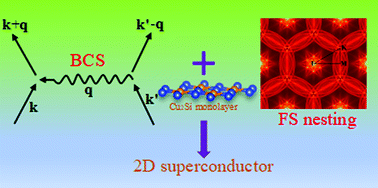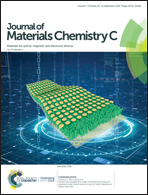Emergence of superconductivity in a Dirac nodal-line Cu2Si monolayer: ab initio calculations
Abstract
Following the prediction given by first-principles simulations [J. Am. Chem. Soc.137, 2757 (2015)], a Dirac nodal-line Cu2Si monolayer has been successfully synthesized on a Cu(111) surface [Nat. Commun.8, 1007 (2017)] or on a Si(111) substrate [Phys. Rev. Mater.3, 044004 (2019)]. However, its superconducting properties have never been reported in experiments or theory. Here, through first-principles calculations, we study its electron and phonon properties and electron–phonon coupling to investigate the possibility of superconductivity for a metallic Cu2Si monolayer. The results show that it is an intrinsic BCS-type superconductor, with the estimated superconducting temperature Tc being ∼4.1 K. We further find that the Fermi surface nesting is partially responsible for its superconducting character. Carrier doping as well as biaxial strains will suppress the Tc. Our results help to explain the challenges to experimentally probe superconductivity in substrate-supported Cu2Si monolayers and provide clues for further experiments.



 Please wait while we load your content...
Please wait while we load your content...